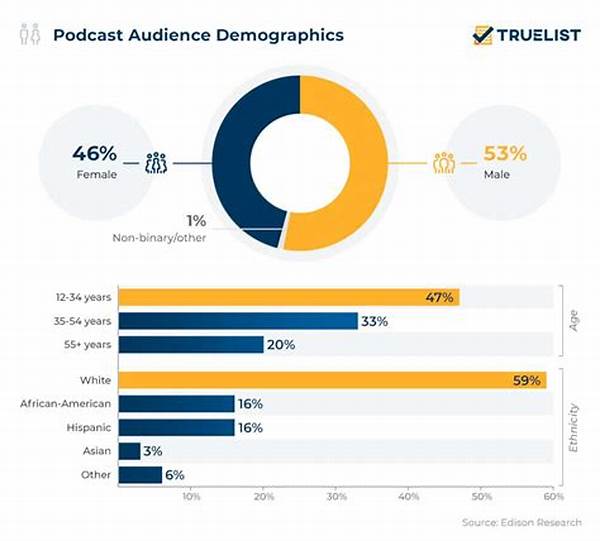Hey there! Ever wondered who’s actually listening to faith-based content? Well, you’re in the right place! Let’s dive into the fascinating world of faith-based listener demographics. Whether it’s podcasts, radio shows, or live sermons, understanding who’s tuning in can reveal quite a lot about cultural trends and personal connections to spirituality. By analyzing faith-based listener demographics, we can uncover patterns that speak volumes about society’s evolving spiritual landscape.
Read More : Uplifting Gospel Tunes Live
Understanding Listener Profiles
When it comes to faith-based content, the listener demographic is as diverse as it gets. We’ve got folks tuning in from different age groups, backgrounds, and regions, each coming with their unique expectations and preferences. By analyzing faith-based listener demographics, we get insights into the elements that resonate with different groups. For instance, younger audiences might be drawn to modern interpretations of age-old religious teachings, while older generations might prefer more traditional approaches. This analysis helps creators tailor content that can cater to everybody, ensuring that faith-based content continues to thrive in this digital age.
Now, why is this important? Well, by knowing who’s listening, creators can optimize their messaging to better connect with their audience. It’s like speaking the same language! Plus, faith-based organizations can use this data to engage more effectively with their communities, whether they are local or global. This deeper understanding can also lead to more interfaith conversations, bringing diverse faith groups closer together and fostering a spirit of unity. All in all, analyzing faith-based listener demographics is a crucial step in keeping faith content relevant and impactful.
Key Factors to Consider
1. Age Variations: Understanding how different age groups engage with spiritual content helps tailor messages appropriately, making the conversation around faith relatable to all ages.
2. Geographic Distribution: Knowing where listeners are based helps in regional customization of content, ensuring that cultural and regional nuances are respected.
3. Technological Preferences: By analyzing faith-based listener demographics, we can identify preferred platforms, allowing for better distribution strategies, whether it be radio or streaming services.
4. Cultural Backgrounds: Recognizing the diversity in cultural and ethnic backgrounds among listeners enhances the inclusivity of faith-based content.
5. Engagement Levels: Some listeners prefer passive listening, while others want interactive sessions. Understanding these preferences allows for diversified content offerings.
The Role of Technology
The digital age has revolutionized how faith-based content is consumed. Thanks to streaming services, podcasts, and online communities, sharing spiritual teachings has never been easier. By analyzing faith-based listener demographics, content creators can determine which platforms are yielding the most engagement. It’s a bit like having a digital map of where your audience is concentrated!
For example, some might find inspiration during their morning commute while listening to a podcast, while others may catch up on faith-based programming via streaming services before bed. The key is to meet listeners where they are, and technology, with all its flexibility and reach, allows just that. So, while the message remains timeless, how it’s delivered can vary greatly. Understanding these dynamics through the lens of listener demographics leads to more tailored and effective content strategies.
Adapting to Change
Faith-based content isn’t immune to the winds of change. As societal norms evolve, so too do the preferences of the audience. Analyzing faith-based listener demographics becomes crucial in adapting and staying relevant. It’s about keeping a finger on the pulse of what’s resonating with listeners now.
1. Trend Analysis: Observing current trends in listener behavior helps anticipate future shifts.
2. Feedback Channels: Encouraging audience feedback allows for real-time adjustments to content.
3. Content Variety: Offering a range of topics ensures meeting the varied spiritual needs of a diverse audience.
4. Interactivity: Incorporating interactive elements like Q&A sessions can greatly enhance engagement.
Read More : Top Gospel Song Chart
5. Collaborations: Joining forces with other faith-based content creators can attract a broader audience.
6. Innovative Practices: Embracing new technologies and methods keeps the content fresh and appealing.
7. Community Insight: Engaging at the community level can provide grassroots insights into shifting demographics.
8. Platform Flexibility: Being open to using new digital platforms can expand reach significantly.
9. Cultural Sensitivity: Understanding cultural shifts ensures respectful and relevant content creation.
10. Consistent Evaluation: Regularly assessing content strategies keeps them aligned with listener needs.
Why It Matters
In our world of constant change, the way faith is expressed and experienced continues to evolve, too. By analyzing faith-based listener demographics, creators understand what forms of expression are most meaningful. It’s not just about numbers; it’s about connection. How are people connecting with their faith through these mediums? What stories are they finding solace in?
By answering these questions, faith leaders, educators, and content creators can continue to foster communities that feel seen and heard. As individuals seek meaning, spirituality often offers comfort and direction. By keeping a close eye on these demographics, those who curate faith-based content can ensure that their offerings are not just relevant but also resonant. And in the end, it’s this resonance that can make spiritual experiences more profound and personal.
Exploring New Avenues
Analyzing faith-based listener demographics opens doors to countless possibilities. Consider the opportunity to delve deeper into niche markets or explore untapped sub-genres within the faith-based spectrum. Perhaps there are spiritual topics or themes that have yet to be fully explored in contemporary contexts.
For instance, the intersection of spirituality and mental health has gained traction, presenting a rich area for growth and discussion. By understanding who’s listening, content creators can venture into these new territories with confidence, knowing they are supported by an engaged and interested audience. It’s about expanding the conversation, making room for new voices, and creating content that resonates on a deeply personal level.
In conclusion, analyzing faith-based listener demographics is about curiosity and connection. By understanding the who, what, and where, faith-based content can thrive, adapt, and continue to be a source of inspiration for people from all walks of life. Here’s to a deeper understanding and a brighter future for faith-based content!
